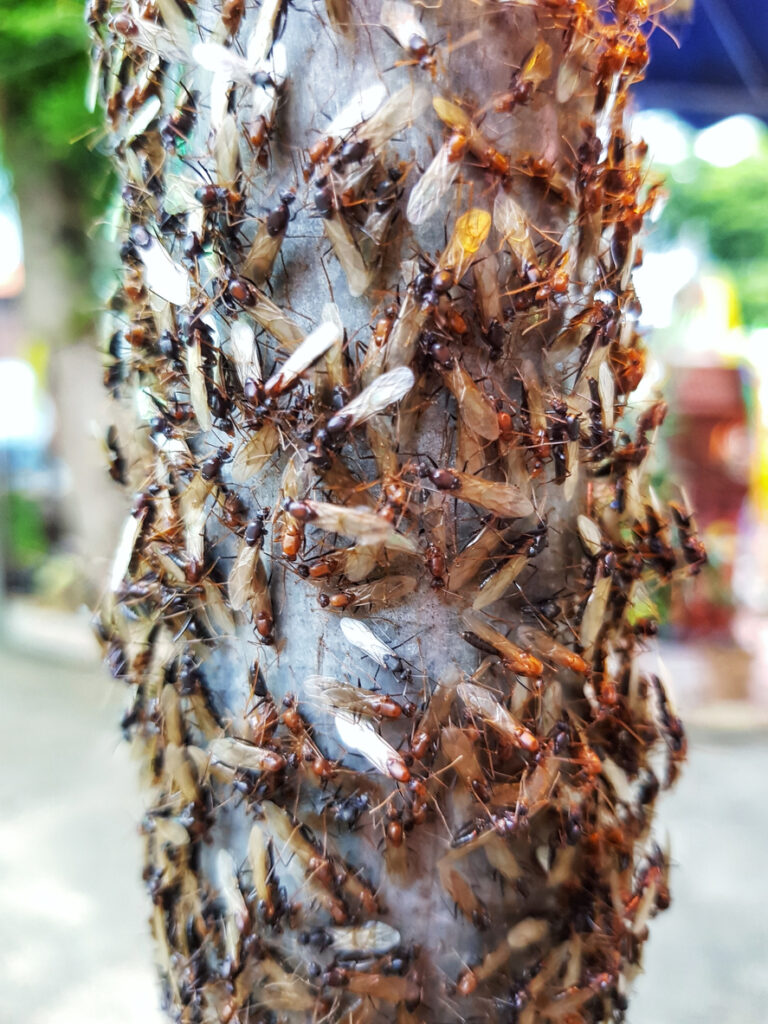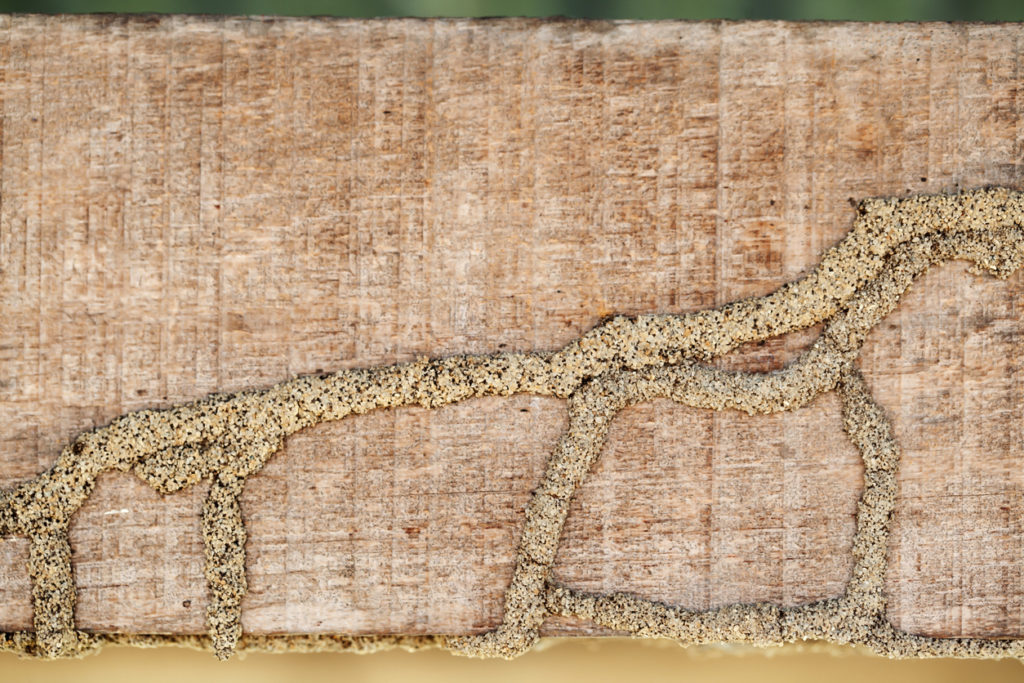
As the New York and Long Island area begins to warm up, the swarmers fly from their nests looking for a mate and expand their colony. Both termites and ants are swarmers. We get many frantic calls wanting to know whether the swarmers they see are flying ants or termites. We thought sharing a few details on how to tell the difference might be helpful.
Some signs that you have a termite problem are wings dropped by swarmers, damaged wood, mud tubes, peeling paint or the wood feels soft.

Termites or Ants?
1) Physical Characteristics
Ants have a pinched narrow waist, while termites have a straight waist. Ants have bent antennae, while termites have straight antennae. Flying ants have larger front wings, while termites have wings of the same size.
Termites have wide bodies and they are typically dark brown or black. Their wings are the same length and translucent. Flying ants bodies are black, brown or reddish and their wings are tinted brown with the back wings being smaller than the front wings.
2) Diets
Ants are omnivores and primarily eat seeds, other insects, nectar and food scraps. Termites consume mainly wood, paper and other cellulose-based products.
3) Colonies
Both termites and ants life in large colonies. Termites and some ants, such as carpenter ants, inhabit decaying wood or wood structures. However, termites cause serious structural damage since they eat wood, whereas carpenter ants do not. Thus, carpenter ants do not tend to cause structural damage.
4) Life Cycle
There is a life cycle difference between termites and ants. A termite’s life cycle has 3 phases — egg, nymph (larvae) and adult. Whereas an ant has four phases — egg, larva, pupa and adult. Termites survive for several years, and the queen of the colony can live for decades. Whereas ants live for a couple of months and the queen for a few years.
5) Reproductive Cycle
Their reproductive cycle is pretty much the same. The fertile termites and ants fly from their nests during the warmer months to mate and establish new colonies. They both lose their wings after mating. However, the male ant partner typically dies after mating with a female, whereas both male and female termites live on to expand the new colony.
What areas do termites normally infest?
Termites frequently infest in the basement or cellar areas of your home or office. It is common to find termites in the structural timbers immediately above your basement wall or in wood posts, posts, steps, door frames, and trim embedded in an earth or concrete floor. During the warm months, termites favor furnaces, chimneys, hot water heaters, and hot water pipes.
If you believe your house is infested with termites, it is important to call The Bug Stops Here as soon as possible. There may be extensive damage to the structural timbers and woodwork of your home or office. Call today to schedule a time where a qualified exterminator can inspect your home for termite damage.
SOME HELPFUL ARTICLES:
TIME TO SCHEDULE YOUR TERMITE INSPECTION
5 EARLY WARNING SIGNS OF A TERMITE INFESTATION
HOW TO DEAL WITH BED BUGS

The Bug Stops Here is a full service pest control and exterminator company located in Long Island, New York serving all of New York City; Brooklyn, Queens, Manhattan and surrounding area. For twenty years, our team at Pest Control team has been comprised of professional exterminators who provide high quality pest control services for both commercial and residential properties throughout New York. Our team of extermination professionals can get rid of a variety of pests, ranging from termites, mosquitoes, ticks & fleas, wasps,hornets, rodents, ants to bed bugs. Our goal is to provide you with the best pest control services that exceed both your standards and those of the industry as a whole.
